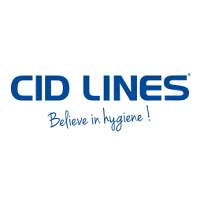Earn money by battling subclinical coccidiosis

Prevention of subclinical coccidiosis through hygiene and control methods via medication are imperative to minimise the negative economic impact on broiler flock performance.
In today’s modern poultry farming coccidiosis is one of the most common parasitic diseases. Because most broiler feeds contain anticoccidial drugs, cases of clinical coccidiosis are rare. However, subclinical coccidiosis is the most frequently diagnosed disease in broiler chickens. It is difficult to diagnose and treat subclinical coccidiosis because the birds appear normal although their performance (feed conversion rate and body weight gain) is lower.
Major parameters for economical loss from coccidiosis
The clinical form coccidiosis manifests through prominent signs of mortality, weight loss, depressed animals, diarrhoea or bloody faeces. In this case, it is obvious that these losses lead to direct costs. However due to the professional approach from farmers, vets, feed companies etc. to try to control or minimise prevalence of coccidiosis through vaccines, coccidiostatical additives etc., the sub-clinical coccidiosis will give rise to the highest proportion of the total economic losses.
The subclinical coccidiosis manifests mainly by poor weight gain and reduced efficiency of feed conversion rate (FCR). The FCR is one of the major economic parameters used worldwide to estimate profit/loss in the broiler industry. Several other bacterial and viral diseases get sometimes more ‘time in the spotlights’ because of sudden attack and high mortality. However, coccidiosis is a type of protozoal disease that causes maximum economic loss and has remained unattended, may be due to the subclinical form of the disease.
High economic impact on flock
The overall comparison of economic traits for all types of poultry has revealed that loss is maximum due to reduced body weight gain, followed by increased feed conversion ratio (FCR) in the total loss due to subclinical coccidiosis. So, needless to say subclinical coccidiosis in a poultry flock has a very high negative and economic impact on the flock as well as for the poultry producer.
Another predisposing factor is the confined host rearing conditions, which lead to an increase in the numbers of oocysts, which are ingested by poultry via the litter. When there is an outbreak, there is an immediate and considerable drop in production figures and the recovery and reestablishment period after treatment is slow. Some flocks never fully recover or regain their full production potential.
Estimating losses
The models developed by Williams (1999) to estimate losses due to poultry subclinical coccidiosis can be a good guideline.
A: Total Loss due to Reduced Body Weight Gain (=TLRBG)
If considered that 80% of the broilers are suffering from sub-clinical coccidiosis (=RI, rate of incidence) and each bird leads to a reduction of 0.1 kg from the final live weight (=RBW, Reduced Body Weight gain), the model to use is:
[{(N° of birds) x (RI)} – mortality, n° of birds] x (RBW, kg) x (rate of poultry meat, €/kg)
Example: {(20.000 x 80%) – 500} x 0.1 x 0.80 = €1240
B: Total Loss due to Increased Feed Conversion (TLIFCR)
If considered that 80% of the broilers are suffering from sub-clinical coccidiosis (=RI, rate of incidence) and each bird leads to an increased FCR of 0,1 (=DiffFCR), the model to use is:
[{(N° of birds) x (RI)} – mortality, n° of birds] x (LW, live weight per bird) x (DiffFCR,) x (CF, cost of broiler feed, €/kg)
Example: {(20.000 x 80%) – 500} x 2.2kg x 0.1 x €0.35/kg = €1193.50
- In this example the farmer’s loss for one round is presented from 2 different points of view: lower income (meat price vs. a reduced body weight gain)
- higher cost (feed price vs. increased feed conversion)
Based on the models of Williams it can be concluded that, with the given feed price and meat price in the example, the loss due to coccidiosis for parameter B (total loss due to increased feed conversion) is €0.06 per bird or could yearly add up to €8354.50.
Prevention through a well-considered hygiene programme
It is a recognised fact that treatment alone cannot prevent the economical losses. It is well established within the poultry sector that the only choice is therefore prevention of the disease through a well-considered hygiene programme that should be a symbiosis between veterinary support, feed-additives and a strict protocol for cleaning and disinfecting. The goal of the disinfection procedure is to break the orofecal transmission (kill the exogenous stage) whereas anticoccidials act only on the endogenous stage.
Proper cleaning and disinfection measures are an extra tool in the fight against coccidiosis and cryptosporidiosis. Cid Lines tackles the problem of coccidiosis with Kenocox. A patented formula with a proven efficacy against sporulated oocysts. Many disinfectants are not effective against these resistant oocysts and those that claim activity work only against the unsporulated form of the oocysts. The product, however, is a broad-spectrum disinfectant that has proven efficacy against sporulated and unpopulated oocysts of Eimeria spp. (Coccidiosis).
Cleaning and disinfectant protocol
In the Cid Lines protocol for cleaning and disinfecting a poultry unit, it is crucial that the instructions are executed correctly and in the right order. The basic guidelines are as follows:
- Remove all removable equipment – Take away all equipment and clean and disinfect accordingly
- Dry cleaning – Removal of litter, feed residues and manure
- Apply detergent – Foam an alkaline detergent, 0,3L solution/m² (saves time and increases efficacy of main cleaning)
- Main cleaning – High pressure, 12-30L/min. All surfaces! High pressure and hot water saves time and money.
- Allow to dry – When dry, there is no further dilution possible of the disinfectant.
- Visual control – Dirt cannot be disinfected.
- Anti-coccidiosis disinfection – Spray or foam 4% Kenocox 0,4L solution/m². Minimum 2 hours contact time.
Author: Lieven Dambre, Product Manager, Cid Lines
References available on request
Join 31,000+ subscribers
Subscribe to our newsletter to stay updated about all the need-to-know content in the poultry sector, three times a week. Beheer
Beheer

 WP Admin
WP Admin  Bewerk bericht
Bewerk bericht